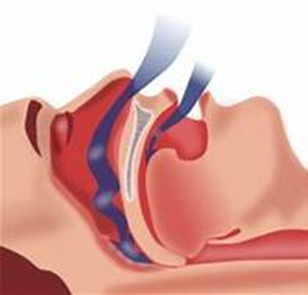A nurse is caring for a client who is postoperative. When helping to manage the client's pain, which of the following principles should the nurse apply? (Select all that apply.).
Use a scale from 0 to 10 to monitor the severity of the client's pain.
Consider the client's individual expression of pain.
Expect the client to express his pain both verbally and nonverbally.
Administer opioids with caution because they will eventually lead to addiction.
To achieve fast-acting pain relief, administer analgesics.
Correct Answer : A,B,E
Choice A rationale:
Using a pain scale from 0 to 10 is a crucial principle in managing a client's postoperative pain. It allows for a standardized assessment of pain severity and helps healthcare providers determine the effectiveness of pain management interventions.
Choice B rationale:
Considering the client's individual expression of pain is essential in providing personalized care. People experience and express pain differently, so tailoring the approach to each client's unique needs is vital for effective pain management.
Choice C rationale:
Expecting the client to express pain both verbally and nonverbally is another important principle in pain management. Some clients may not be able to communicate verbally, so nurses should be attentive to nonverbal cues such as grimacing, restlessness, or changes in vital signs to assess pain.
Choice D rationale:
Administering opioids with caution is a general principle in pain management, but the statement that they will eventually lead to addiction is an oversimplification. While there is a risk of opioid addiction, it is not an absolute certainty, and the benefits of pain relief often outweigh the risks. Therefore, this statement is not entirely accurate.
Choice E rationale:
Administering analgesics for fast-acting pain relief is a valid principle, especially in the postoperative period when the client may be experiencing acute pain. Fast-acting analgesics help alleviate immediate discomfort.
Nursing Test Bank
Naxlex Comprehensive Predictor Exams
Related Questions
Correct Answer is B
Explanation
Choice A rationale:
Placing electrodes on all four extremities is not the initial step in using a Transcutaneous Electrical Nerve Stimulator (TENS) unit. It may not be necessary for the specific pain management needs of the patient and can be uncomfortable or impractical.
Choice B rationale:
This is the correct initial step when starting TENS treatment. The nurse should adjust the settings to a level below the threshold at which the patient feels a tingling sensation. This ensures that the treatment is comfortable and safe for the patient. The goal is to provide pain relief, not to induce discomfort.
Choice C rationale:
Turning the unit on before attaching it to the patient is not advisable. It's essential to connect the electrodes to the patient first and then turn on the TENS unit. This sequence helps prevent accidental electrical stimulation before the device is properly set up.
Choice D rationale:
Applying conductive jelly to uncoated electrodes is a step in preparing the electrodes for use, but it should be done after attaching the electrodes to the patient's skin. This choice does not address the initial step in TENS treatment, which is setting the stimulation level. .
Correct Answer is C
Explanation
The correct answer is: C. Decreased energy.
Choice A reason: Hypotension is not typically associated with obstructive sleep apnea (OSA). OSA is more commonly linked with hypertension due to the frequent arousals during sleep that activate the sympathetic nervous system, leading to increased blood pressure.
Choice B reason: Pneumonia is an infection of the lungs and is not a direct consequence of OSA. While OSA can affect the respiratory system, it does not cause pneumonia. However, individuals with OSA may have a higher risk of respiratory infections due to compromised breathing during sleep.
Choice C reason: Decreased energy is a common symptom of OSA. People with OSA experience repeated episodes of partial or complete upper airway obstruction during sleep, leading to disrupted sleep patterns and insufficient rest. This results in daytime sleepiness and fatigue, which are hallmark signs of the condition.
Choice D reason: Thyroid disease, specifically hypothyroidism, can be associated with OSA, but it is not a direct finding of the condition. Hypothyroidism can lead to changes in the soft tissues of the upper airway and contribute to the development of OSA, but it is not a symptom used to diagnose OSA.

Whether you are a student looking to ace your exams or a practicing nurse seeking to enhance your expertise , our nursing education contents will empower you with the confidence and competence to make a difference in the lives of patients and become a respected leader in the healthcare field.
Visit Naxlex, invest in your future and unlock endless possibilities with our unparalleled nursing education contents today
Report Wrong Answer on the Current Question
Do you disagree with the answer? If yes, what is your expected answer? Explain.
Kindly be descriptive with the issue you are facing.
